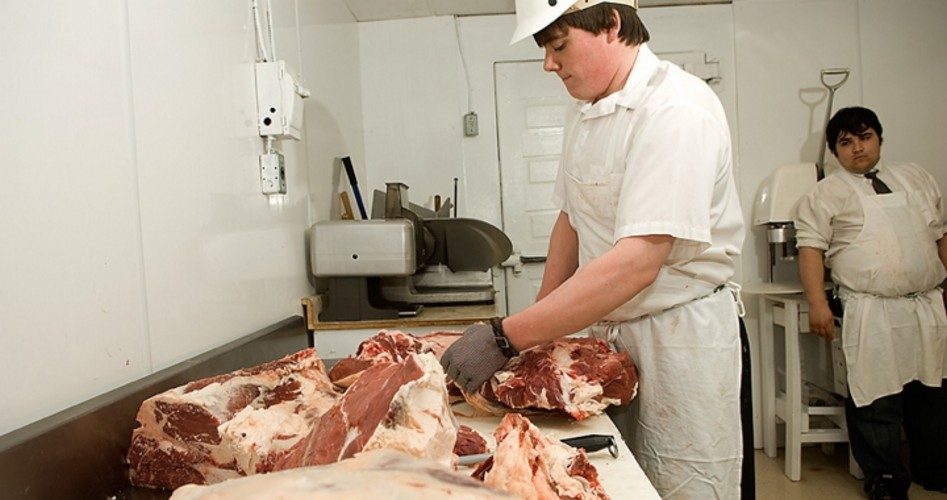
While the U.S. Department of Labor continues to tout decreased unemployment rates, the reality is that a significant portion of the unemployed have simply withdrawn from the job market entirely, according to a survey by Express Employment Professionals. According to the survey, 40 percent of the 8.5 million unemployed Americans have given up looking for jobs.
CNBC reports, “A tight jobs market, the skills gap between what employers want and what prospective employees have to offer, and a benefits program that, while curtailed from its recession level, still remains obliging have combined to keep workers on the sidelines, according to a Harris poll of 1,553 working-age Americans conducted for Express Employment Professionals.”
Some notable findings from the survey include the impact of unemployment benefits on those surveyed. Nine out of 10 stated that they would “search harder” if their unemployment benefits expired. Sixty-nine percent of those surveyed agreed with the statement that the unemployment benefits have provided a “cushion so that I can take my time in searching for a job.”
While 59 percent said compensation “has allowed me to take time for myself,” 36 percent agreed that it “has allowed me to turn down positions that weren’t right for me,” and 40 percent agreed “I haven’t had to look for work as hard knowing I have some income to rely on.”
Bob Funk, CEO of Express Employment Professionals and former chairman of the Federal Reserve Bank of Kansas City, remarked on these trends and how they relate to the bigger picture. “This survey shows that some of the troubling trends we observed last year are continuing,” Funk said in a statement. “While the economy is indeed getting better for some, for others who have been unemployed long term, they are increasingly being left behind.”
Unfortunately, the withdrawal of unemployed Americans from the job market creates a deceptively low unemployment rate. The Department of Labor reported in April that the current unemployment rate is 5.4 percent. However, the unemployment rate calculated by the Department of Labor is seriously flawed because it does not factor in whole groups of people whom Americans would recognize as being unemployed, including those who are severely underemployed. Gallup reported in February that the real unemployment rate is hovering at approximately 12 percent.
For example, a college graduate who is working only a few hours per week at the moment because he cannot find full-time work is not considered to be unemployed, even if his income is completely unlivable.
Gallup.com explains just how the government could get this figure so wrong:
If you, a family member or anyone is unemployed and has subsequently given up on finding a job — if you are so hopelessly out of work that you’ve stopped looking over the past four weeks — the Department of Labor doesn’t count you as unemployed….
Say you’re an out-of-work engineer or healthcare worker or construction worker or retail manager: If you perform a minimum of one hour of work in a week and are paid at least $20 — maybe someone pays you to mow their lawn — you’re not officially counted as unemployed in the much-reported 5.6%.
The unemployment rate provided by the Department of Labor does not track individuals who fall under the “U-6” rate, which includes discouraged workers who have settled for part-time employment or have given up their job search altogether.
Gallup’s CEO Jim Clifton opines that the false unemployment rate released by the government “cruelly overlooks” a number of people who are struggling.
Releasing false unemployment rates does a disservice to those who fall under the U-6 rate because these individuals are the victims of an obliterated economy and job market. “Over the last year, we have seen the unemployment rate go down, but we too easily forget that there are people still hurting, still wanting to work, but on the verge of giving up,” Express Employment’s Funk said. “I believe everyone who wants to work should have a job, so we must not overlook those who have been left behind and left out of the job market.”
Stephen Moore, chief economist at the Heritage Foundation, observed last year that the percentage of the working-age population that is actually part of the labor force has declined by three percentage points since President Obama took office in January 2009, bringing that figure to 62.7 percent.
According to Moore, that is the lowest proportion of the working-age population in the labor force since early 1978.
Moore wrote, “In effect, the labor force is 7.4 million smaller than it otherwise would have been had people either not stopped looking for work or, particularly with the case of younger Americans, simply failed to start looking for work.”
Gallup’s Clifton observes that America is failing to deliver the great American dream of having a job, which provides individuals a sense of self-worth.
A “good job,” according to the standards set by Gallup, is one that offers 30 or more hours of work per week and provides a steady paycheck. Gallup calculates a payroll to population rate as a measure of those who are employed by an employer for at least 30 hours per week and is calculated as a percent of the total population. At the moment, the United States has a payroll to population rate of just 44 percent. Clifton notes that in order to replenish America’s middle class, that rate would need to increase to 50 percent, and at least 10 million new jobs would need to be created.




